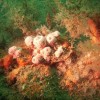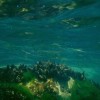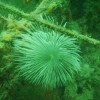The Marine Biology is the study of plants and animals that live in salt or brackish water of oceans, seas and lagoons. Life is born in the sea and has developed evolving into a wide variety of species. The Marine Biology study organisms visible only with a microscope, such as many species of plankton or microbenthos, but also big sized species such as cetaceans. The organisms studied include a wide variety of shapes and structures, such as sharks, molluscs, sponges, coelenterates, bryozoans and tunicates.
The study of the Lagoon of Venice and the Adriatic coastal areas is the aim of the Laboratory of Marine Biology of the Natural History Museum of Venice Giancarlo Ligabue. Initially it was aimed to complete historical studies describing communities and ecological characteristics of these area. Then, the activities were focused in controlling the effects on the environment and on biological communities of the changes made by humans in the Lagoon. Biological monitoring of the Lagoon means a continuous observation of the species, following any modifications of existing communities, identifying and pointing out the emergence of new species (non-native species, so harmful to biodiversity on a global scale) and checking-out regression or disappearance of native species.
The Natural History Museum studies in particular groups of marine organisms as molluscs and crustaceans, but also jellyfish and echinoderms. Also the Museum collects reports of the local presence of sea turtles, cetaceans and generally unusual or less-known species. Moreover, the Museum offers services like taxonomic identification of marine organisms for companies, institutions or individuals.
From the late 80s, the Museum studies the existing biological communities living onthe tegnue, particular natural rocky outcrops off the Venetian coast. Since 2006, there is a specific project dedicated to the identification and biological characterization of these environments, realized in collaboration with the Regional Agency for Environmental Prevention and Protection of Veneto (ARPAV).



